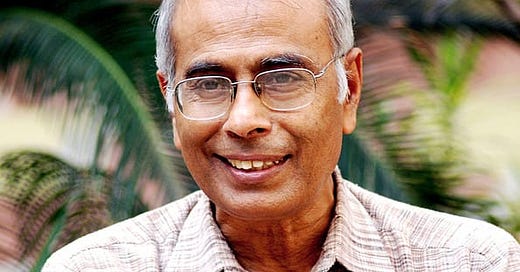Welcome to the Brown History Newsletter. If you’re enjoying this labour of love, please do consider becoming a paid subscriber. Your contribution would help pay the writers and illustrators and support this weekly publication. If you like to submit a writing piece, please send me a pitch by email at brownhistory1947@gmail.com.
Don’t forget to check out our SHOP and our Podcast.

The Assassination of an Anti-Superstition Activist
In 2013, Narendra Dabholkar, India's leading anti-superstition activist who had campaigned to enact anti-black magic laws and take down false Godmen, was shot dead by assailants on a motorbike. His killers have still not been found guilty.
“If I have to take police protection in my own country from my own people, then there is something wrong with me. I'm fighting within the framework of the Indian constitution and it is not against anyone but for everyone," said Narendra Dabholkar when asked why he had been refusing police protection in the face of furious and frequent death threats.
An ordinary Maharashtrian man, with a frail frame, balding head, and twinkling bespectacled eyes, physician Narendra Dabholkar was an unexpected public hero in 1980s India. Despite not having a formidable build or Bollywood glamour to back him up, Dr. Dabholkar had won hearts across the desi heartland with his resilient campaign against a silent yet deadly killer within the nation- superstition.
Indians are a believing people, in a democracy where religion shapes most public discourse around law, temples, and mosques dot streets across cities and villages, it isn’t unexpected for this belief to sometimes take a nefarious turn. Sacrificial killings, witch-hunts, and deaths at the hands of dubious babas and tantriks have been rampant in the sub-continent.

These consequences of occultism have been the subject of many recent media investigations and explorations. To reference a popular piece of media, the 2021 Netflix documentary House of Secrets took a close look at the brutal consequences of these beliefs, following the ritualistic suicide of 11 members of a Delhi family.





